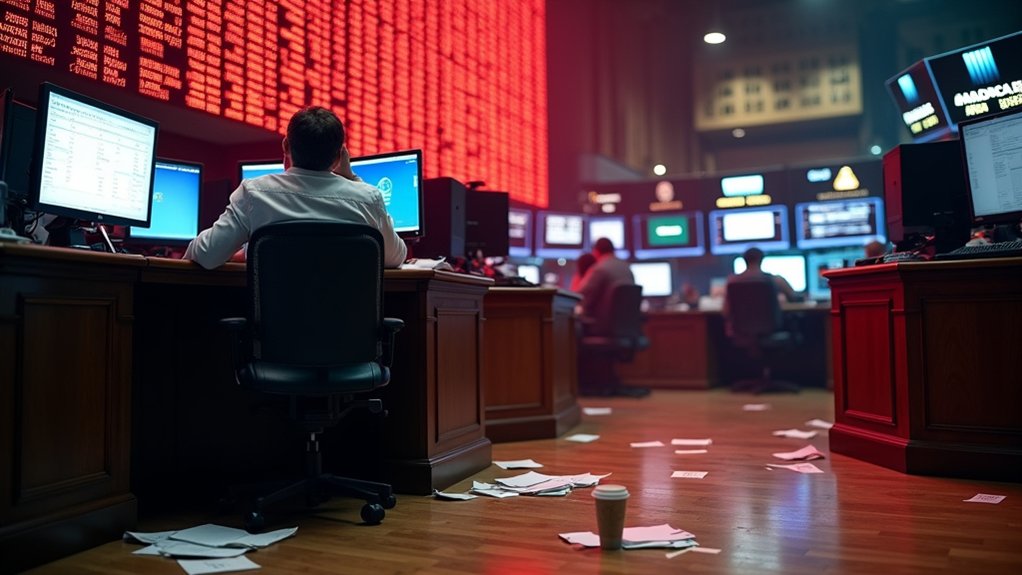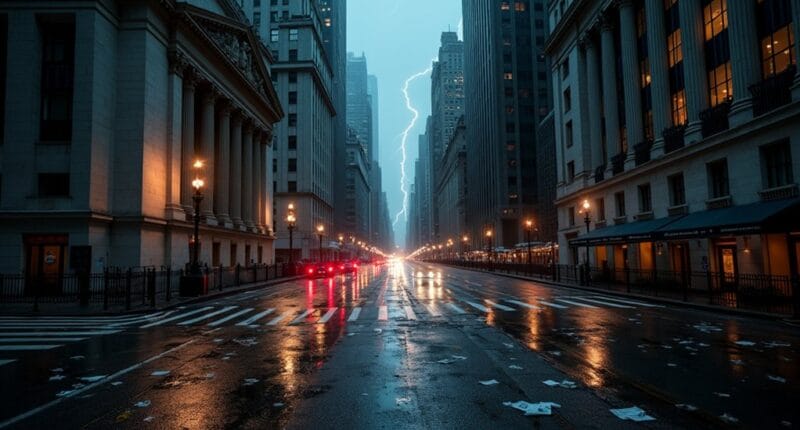Wall Street’s epic meltdowns have repeatedly devastated investors since 1929’s brutal 89% plunge. Black Monday 1987 saw the Dow nosedive 22.6% in one terrifying day. The 2000 dotcom bubble burst obliterated tech fortunes. In 2008, Lehman Brothers’ collapse triggered global panic. COVID-19 vaporized five trillion dollars in mere weeks during 2020. Each crash taught harsh lessons, yet markets keep finding new ways to implode. The full story gets worse.

Chaos, greed, and panic – the unholy trinity of Wall Street’s darkest hours. When markets crash, they don’t just stumble; they face-plant spectacularly. The granddaddy of them all, the 1929 crash, sent stocks into an 89% nosedive that took 25 years to recover from. Talk about a long-term investment gone wrong.
When Wall Street falls, it doesn’t just trip – it plummets into an abyss of financial devastation and shattered dreams.
The crash wiped out personal savings for millions of Americans, leaving them financially devastated. But Wall Street never learns. Fast forward to Black Monday 1987, when computerized trading turned into a digital disaster. The Dow plunged 22.6% in one day – the largest single-day percentage drop in history. Fancy algorithms and portfolio insurance? Yeah, those really helped.
The 1990s brought us the dotcom bubble, where any company with “.com” in its name suddenly became worth millions. Reality check came in 2000: turns out, pet food delivery websites weren’t actually worth billions. The Nasdaq crashed 78%, and countless tech bros traded their Ferraris for bicycles. The lack of market liquidity during this period made selling positions nearly impossible without huge losses.
Then 2008 happened. Subprime mortgages, toxic assets, and Lehman Brothers’ collapse created a perfect storm that wiped out trillions. The Dow dropped 777.68 points in one day, and the world learned what “too big to fail” really meant. It would take until April 2013 for the market to regain its previous highs.
Let’s not forget some lesser-known meltdowns. The 1937-1938 recession proved that even recovery can be fragile. The government tightened its belt too soon, and boom – another 50% market dive.
The 1962 Kennedy Slide showed how Cold War jitters could send markets into a tailspin.
And just when we thought we’d seen it all, 2020 brought the COVID-19 crash. Markets nosedived 37% faster than you could say “global pandemic.” Five trillion dollars vanished in weeks.
But this time, central banks flooded the system with cash, and markets bounced back like a rubber ball.
Each crash writes its own chapter in Wall Street’s drama-filled history book. Different triggers, same result: investors losing their shirts, regulators scrambling for solutions, and markets eventually recovering – until the next big meltdown comes along.





